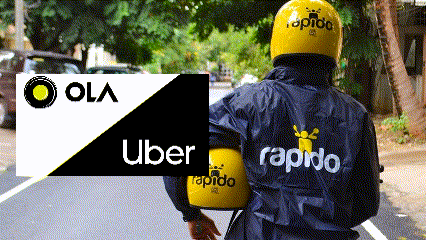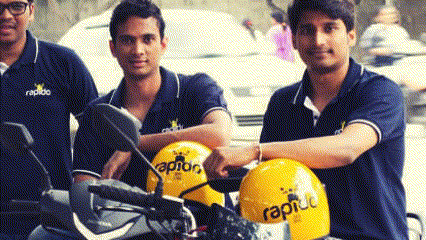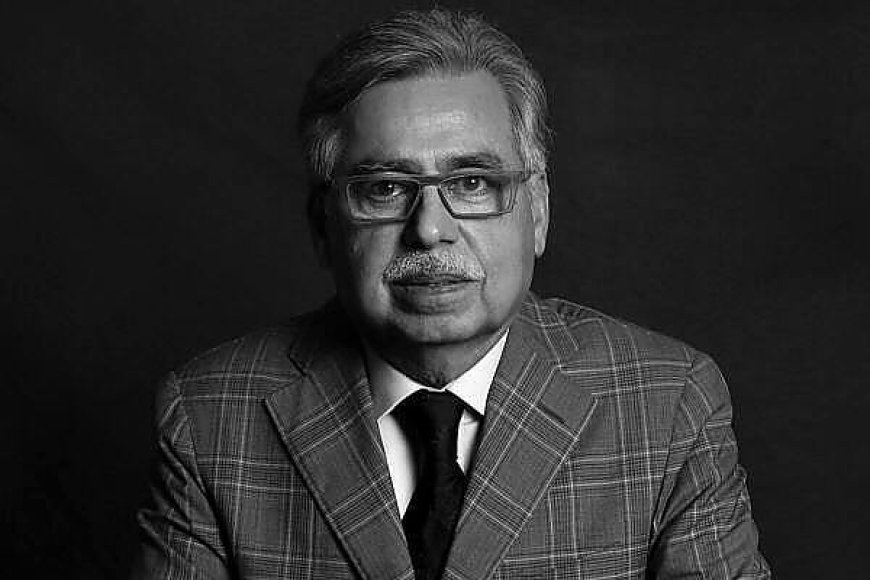How Rapido Destroyed OLA & Uber?
Uber and Ola entered the bike-ride service market three months after Rapido launched. Until 2016, Rapido's situation was really tight until Pavan Munjal stepped in to help them survive. Ola and Uber were dominating big cities, but never worked in small cities. Rapido made its first strategic decision as a result of this. The problem was population density. As people in TIER 2, TIER 3 use buses and autos, there is so much crowding on buses and auto rickshaws.

And in the last two years, Rapido has grown more than 10 times. Now the question is, how can a company that no one had heard of before 2-3 years ago beat companies like OLA and Uber? And most importantly, what are those business lessons we can learn and implement in our business? So the story starts in 2015 when Aravind Sanka was going to close his startup, The Karrier, and he scarcely reaches his home due to traffic.

And then, with Pavan and Rishikesh, he shares his traffic jam frustration and failed startup depression. If he is so fed up with traffic, his friends advise him to buy a bike. A bike ride, on the other hand, is preferable to a bike. Most of the areas in Bangalore are high-traffic areas.
But bikes are like snakes; they can go anywhere easily. These three men began researching consumer behavior. Most of the people in Bangalore fit into one of these two categories. No.
1: The Extremely Wealthy They have a lot of money and no problems. NO. 2 OF THE SUPER SAVOURSThey try to save money everywhere. And in these people's lives, they discovered that two issues irritate them the most.
EMPTY POCKETS and LATE AT WORKThey have empty wallets, or they are always late for work. There was only one reason for being late: traffic. After seeing this, they started Rapido. They received 10,000 downloads in one month.
Rapido gained popularity, but then a bomb exploded on them. Uber and Ola entered the bike-ride service market three months after Rapido launched. And Ola and Uber had so much money that they wouldn't have any problems providing free services for a year. But if they did this, Rapido must have closed.
Day by day, Rapido's funds were decreasing. To keep the company alive, Aravind started to pitch investors again. Wherever he went, this was the one question everybody asked him: How will you compete with Ola and Uber? How will you survive?

How exactly are you going to beat them? Till 2016, Rapido's situation was really tight. Rapido must have closed, but here comes Pavan Munjal. Hero Motocorp CEO Pavan Munjal gives them money from his personal funds to help them survive Rapido.
With these funds, he also gives them excellent advice. "Focus on the pies, not the cake," was the advice. So what does this mean? The whole industry is like a cake, and every competitor fights to take their share.
like how kids fight at birthday parties. I will eat cake! I will eat cake! Everybody fights for the cake.
Similarly, this happens in business as well. But if you divide this cake into 7–8 parts, then it becomes pastries. And if everyone focuses on pastries, then there is no need to fight for cake. And this is what Rapido did.
Ola and Uber were dominating big cities; they were unbeatable there, but they never worked in small cities. WHY? ? ?
Because people don't want to use Ola and Uber there. The reason behind this is very simple. For Tier 2 and Tier 3 cities, Ola and Uber are prohibitively expensive. Rapido made its first strategic decision as a result of this.
LOCAL ECOSYSTEM The majority of audience members from Tier 2 and Tier 3 cities used buses or autos for travel. Because this is the most convenient and affordable option for them. But there was a big problem. The problem was population density.
As people in TIER 2, TIER 3, and lower use buses and autos, in buses, there is so much crowding that there is no place to foothold, and auto-wallas ask for rates as per their choice. Rapido discovered that in these cities, they have not one but two opportunities to bring in customers. First, those people who travel every day; and second, those who have bikes but no way to earn more income. Rapido grew its market in these cities by making its system simpler and easier to use.
If Ola and Uber entered these cities, Rapido would have so many riders that before the user opened Ola's app, a Rapido rider would have arrived, picked them up, and taken them. I know one question you would be thinking: "Everything is good, but bikes are not safe. " Have you ever seen how many accidents happen nowadays? Very true.
In India, 2000+ accidents happen daily. And this thing takes us to Rapido's second strategy. RMS (Rider Monitoring System) Through this system, Rapido tracks everything about the rider. Whether he has all the documents or not depends on his behavior with customers and the speed at which they drive their bikes; if they Overspeed, an alert is sent to them automatically.
And those riders who do more rides are given incentives. So riders are always available, and the customer experience is always good. Accidents, on the other hand, are unavoidable occurrences. You can take precautions, but you can never completely avoid an accident.
And from personal experience, I can say that when you get hospital bills, all your savings vanish in just one snap. Seriously, whether you have or don't have everything, you should always have health insurance. But in this day and age, do you know what the problem is? Advisers don't tell us the things that are most important to know.
That's why I will always tell you to buy health insurance only through a trusted platform. And if I tell you about me, I use DITTO. I use it because I come to know what is covered by what policy. Which policies are good and which are bad; what is and is not covered?
And I believe everyone should know these things. And the best thing about this place is that whenever I have any doubts, I can call in for a free consultation. They clearly explain what is and is not covered by the policy. You will find the policies of many companies on Ditto.
You can select anyone from there. Those who sell policies only tell you what is profitable for them. But from Ditto's 101 guides, you can know what you definitely should know. The link in the description is for you.
You can also try Ditto. See, it's a matter of your safety. Anything can happen, but health insurance is required. If, when the hospital bills arrive, all of your savings vanish in an instant, now the question is, what did Rapido, Ola, and Uber do after that?
How does Rapido compete with these well-funded firms? So the reason is a concentrated feedback loop. While Ola and Uber can be found in most cities, Rapido is only available in a few. Rapido's focus is not to cover more cities but to give the best service to its customers.
But Ola and Uber's systems are more advanced than Rapido's. How was Rapido accomplishing these feats? So the answer is hidden in their value chain. In every aggregator business model, there are two customers in the value chain.
The first is the customer who will accept your service, and the second is the customer who will provide your service. If you ask any Ola or Uber driver directly, they will undoubtedly tell you that Uber showed a lot of love at first but then revealed their true faces. And today we only work with them because of compulsion. But if you talk to any Rapido driver, they will mostly be happy.
But why? Rapido, like Ola and Uber, charges a 20% commission. So the reason is that Robust Systems Rapido gives their riders incentives and rewards for more rides and good ratings. And so they behave nicely with customers.
They don't speed because they know the app is watching them. If they overspend, they will start getting alerts. If there are more alerts, there will be less income. The best thing Rapido made for riders was the withdrawal system.
Rapido riders are mostly low-income middle-class people who want to earn extra income. And for these people, it is important to get some money in their hands every day. Rapido made their withdrawal system so easy that anyone could withdraw their income daily or weekly. Because of this, the riders are with Rapido.
Today, if you use Rapido and no Rapido is available nearby, you can use the snooze button, and any rider will come to pick you up within 10 minutes. Because of these small steps, Rapido's customer experience is much better than that of Ola or Uber. And due to this reason, within 2 years, Rapido grew at a 10x rate. But the question now is, what will Rapido do in the future?
Rapido has already started joining female riders. So they can provide women with extra income and female customers with extra comfort. Rapido provides bike rides and car rides, and, with bike rental, they have expanded into delivery services, partnering with Swiggy and Zomato. Not only that, but Rapido, like Dunzo, has begun to allow you to bring anything from any shop or send any parcel.
And most importantly, what are those business lessons we can learn and implement in our business? No. 1: Pastries are easier than cakes. As I said, rather than compete in a big market with many competitors, it is better to acquire small segments.
In the same way Rapido defeated Ola and Uber No. 2: KYC: Many fewer people know that KYC's full name is "Know Your Customers."
However, this is not the Aadhar Card KYC.It means identifying each of your customers.Let me give you a hint: in most businesses, your customers aren't the ones who give you money; they're the ones who bring you the customer who will give you money.
As Rapido cared for their riders, the travelers cared for themselves.By the way, do you know why Flipkart acquired Myntra in 2000 CR?You will know after click the next article







